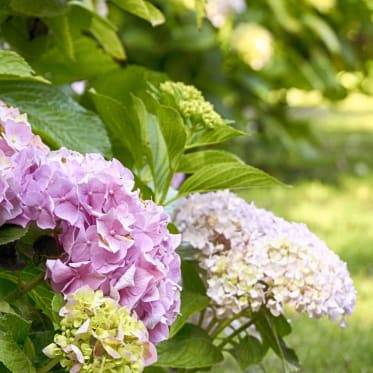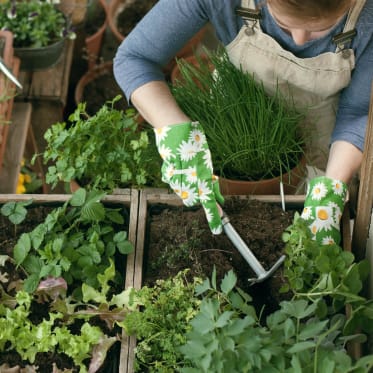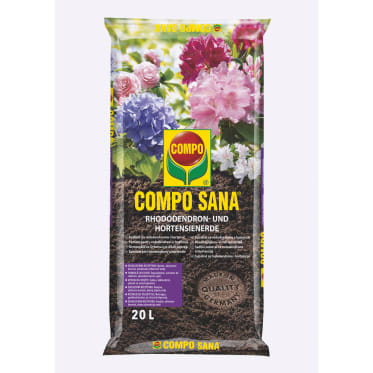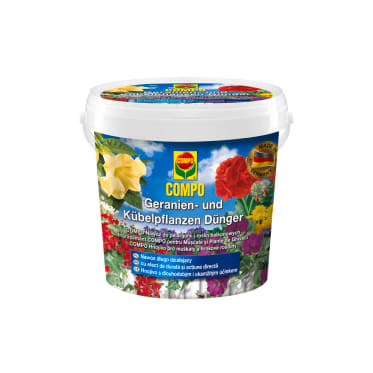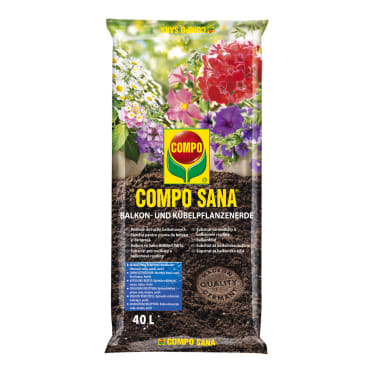Frequent search terms
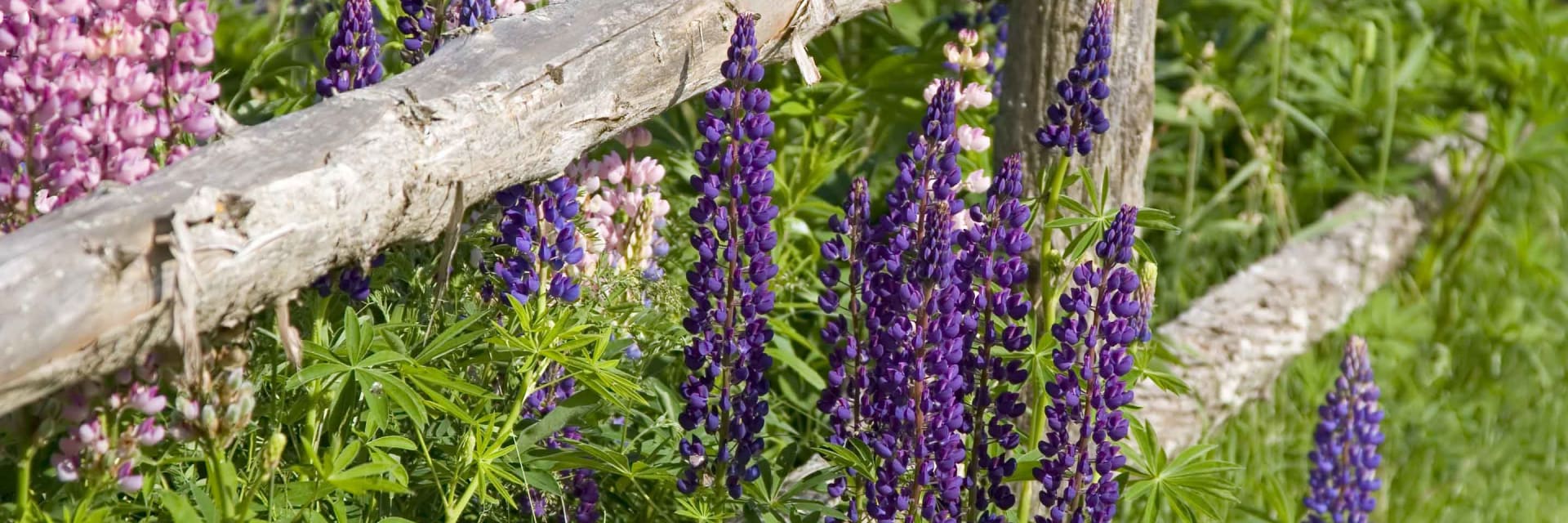
- COMPO
- Guide
- Plant Care
- Garden
- Garden care
- How to create a scented garden
How to create a scented garden
If the scent and sight of single flower stems is enough to lift your mood, what effect will an entire scented garden have on you? We want to motivate you to plant your own fresh-smelling oasis. So, we have listed flowering plants and herbs which flower from spring until well into the winter for you and offer some tips on where to plant and planting in groups. We have just the right thing for every preference.
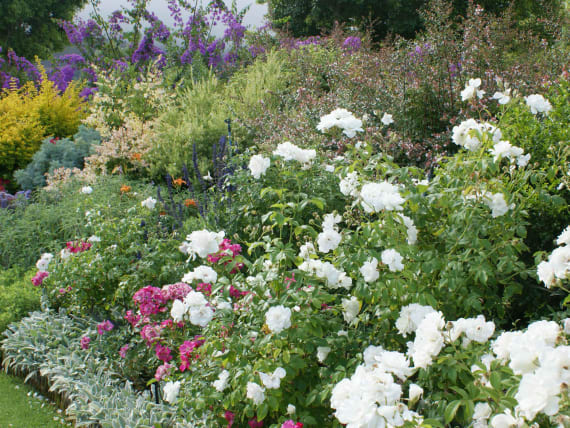
The scent of your plants is really brought to the fore when you create separate scented corners in your garden. While the flowerbed is planted with sweet-smelling flowers and shrubs, herbs feel right at home on your balcony or terrace. We recommend that you keep a large enough distance between plants so that the scents do not mix. If you prefer more intense scents, you can also protect your scented plants from the wind with a hedge or walls. Planting scented flowers in hanging baskets next to seating areas is a great idea, as this allows them to exude their scent right under your nose. If you set up flower tubs or boxes on the outside of your windowsills, you can benefit from the aroma of the plants when you air your living space.
As everyone likes different scents, you should allow yourself to be guided by your senses when it comes to buying. The following scented plants impressed us:
Flowers
| Plant name | Flowering period | Flower colour |
|---|---|---|
Hyacinths | February until April | White, pink, blue |
Sweet violet - 'Queen Charlotte' | March until April | Blue-violet |
Poet's narcissus | April until May | White-yellow |
Candytuft - evergreen candytuft | April until May | White |
Wild blue phlox - 'Clouds of Perfume' | April until June | Light blue |
Dame's rocket | May until July | Violet |
Damask rose | June until July | White, pink |
Garden pink ('Albus') | June until July | White |
Soapwort | July until September | White-pink |
Sweet pea | June until October | White, pink, red, violet |
Marvel of Peru | June until October | White, yellow, pink, red |
Shrubs
| Plant name | Flowering period | Flower colour |
|---|---|---|
Witch hazel - 'Aphrodite/Pallida' | January until March | Orange/yellow |
Viburnum farreri | March until April and October until November | White-pink |
Bridal spray or garland spiraea | April until May | White |
Common lilac | May until June | Violet, pink, white |
Spanish jasmine or English dogwood | June until July | White |
Summer lilac | July until October | Violet, pink, white |
Wonderfully fragrant plants in detail
For your home and garden
Flowers
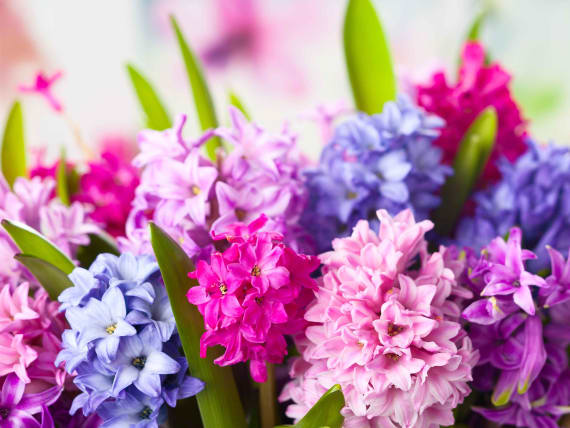
Hyacinths allow you to enjoy an intense fragrance in your home and garden in the late winter months. The bulbous plant is one of the few flowers that gives you that spring feeling in the winter.
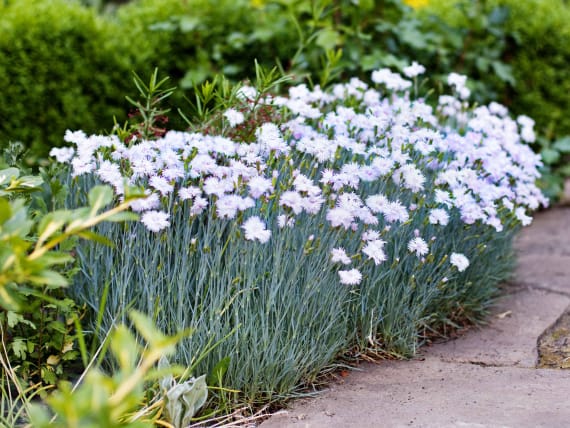
Tufty garden pink 'Albus' is very well suited to stone walls, for example the one that encloses your sitting area, roof planting or planting on the side of paths. This flower also does well between stone slabs in a sandy clay soil. The thick tufts can easily be cut back as needed.
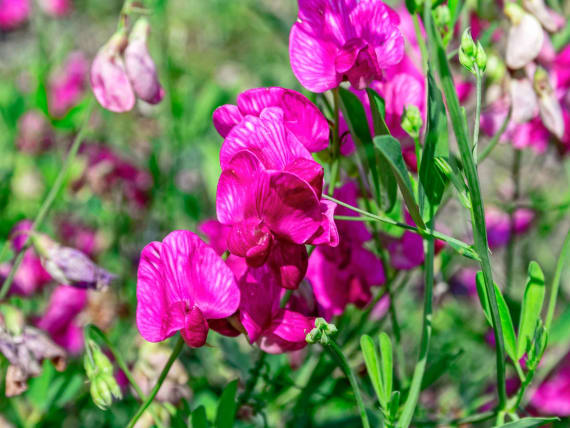
Sweet pea will do fantastically well in your perennial bed. This romantic plant looks particularly attractive in unspoiled and rural gardens. It can be placed in front of building walls or by a fence to create a privacy screen. Sweet pea can grow to around 1.5 metres tall with trellises. If you want to have the fresh scent of flowers on your balcony or terrace, you can also sow some vetch seeds in a flower tub. However, the seed mixtures should not be stored for long as their germinating capacity deteriorates quickly. The butterfly-like flowers also look wonderful in a vase.

You have probably noticed that some flowers only open in the evening or at night. If you can only enjoy the scent of your garden flowers after a long day at work, you should bear this in mind when choosing your plants.
On a mild summer evening, you can delight in the violet-like scent of dame's rocket. Their long stems look particularly fantastic in perennial beds and cottage gardens. The plants feel right at home near a water point, as they prefer a moist and loose soil with plenty of nutrients.

The marvel of Peru also only opens its flowers just before dusk and then flowers into the morning hours. The shrub, hailing from the tropics, comes in a diverse range of flower colours from yellow and orange to red and pink. Multi-coloured flowers and plants with different flower colours are also available, and that is why the marvel of Peru certainly lives up to its name. Once you have bought a bag of seeds, you can delight in the plants every year as the seeds from the flower heads can be sown time and time again.
For the summer and the winter
Shrubs

Whether the typical violet, pink or white, lilac is one of our most popular flowering shrubs and a must for your scented garden.
If you love lilac shrubs or trees, you should opt for common lilac. Just like Spanish jasmine, summer lilac has hanging flowers once the shrub reaches a certain volume. You can observe endless butterflies on the large flowers and watch how they extract the nectar from the flowers.

Witch hazel is becoming increasingly common in Central European gardens, as the bright orange flowers of 'Aphrodite' exude a heavenly scent in winter. Paired with the yellow flowering 'Pallida', witch hazel is a true eye-catcher in gardens in the winter. As the shrub grows slowly, it only needs to be pruned on occasion and is therefore considered to be low-maintenance.
Witch hazel owes its name to its unusual flowering period and its flower shape, as it rolls up to protect itself from the cold. Its leaves are particularly reminiscent of those of a hazel bush.
For balconies, terraces and beds
Herbs
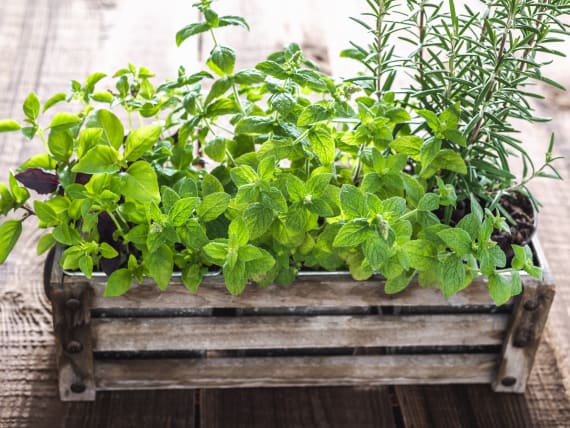
Savoury-smelling herbs not only impress us with their fragrance, the plants also make the perfect addition to dishes. Basil, chives, rosemary and thyme have a particularly strong smell.
Sage, mint and lemon balm also have an aromatic fragrance and taste superb in home-made tea. You can sample the odour by picking a leaf from the plant and rubbing it between your fingers.
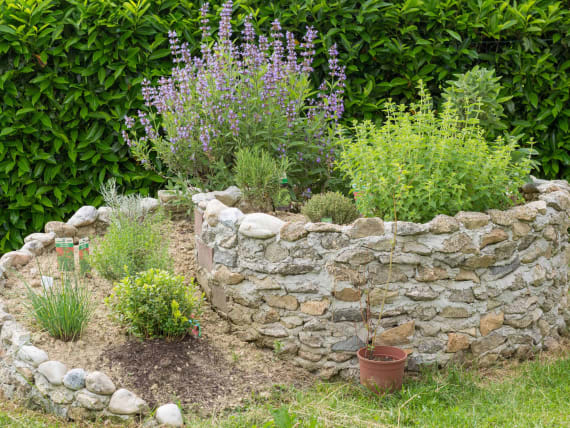
If you have already made other plans for the space on the windowsill, you can plant herbs in your garden in the form of ornamental shrubs. We can recommend grey santolina for this, which bears yellow flowers in the summer. The plant can even reach a height of up to 50 centimetres in dry and nutrient-poor soils. The medicinal herb is perfect for planting in the top layer of a herb spiral.
Lavender does well when planted in combination with roses, creating an intense mixture of aromas. With just a few sprigs, you can bring the fragrance of the Provence into your own four walls.
Incidentally, santolina and lavender keep unpopular mosquitoes at bay, leaving nothing standing in the way of a relaxed summer evening.
Interested in taking up more gardening projects?
These products will help you create your scented garden



